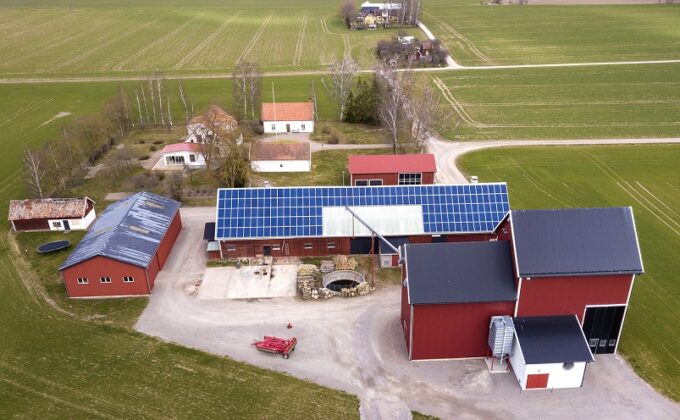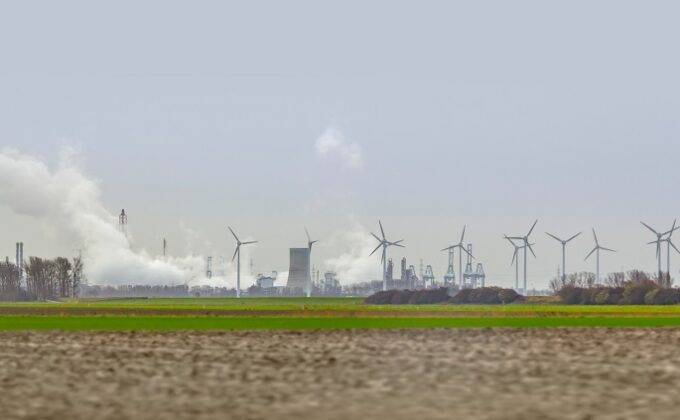Filter >>
Content Filter:
Energy planners and regulators have traditionally valued the health benefits of energy efficiency and renewable energy at zero — because these benefits do not flow to energy users in proportion to usage and because decision-makers had no simple and feasible… View Summary +
We know that electrifying trucks, as we wrote last month, can reduce significant amounts of air pollution; it can also have significant health benefits, particularly for frontline communities. Analysis by Alexander Meitiv and Ann Xu for Texas A&M’s… View Summary +

While there is substantial evidence that the Regional Greenhouse Gas Initiative (RGGI) has been very successful at reducing carbon and other emissions across the multi-state region, there is still important work to be done to document and ensure air… View Summary +

Our jobs, comforts, and ability to survive all depend on something most people take for granted until it goes missing: energy. It powers our lighting, our appliances, our cell phones – our entire daily lives. We need it to search… View Summary +

In this report, produced with the support of the Robert Wood Johnson Foundation, Synapse Energy Economics, RAP and Community Action Partnership take an in-depth look at the disparate impacts electric and natural gas infrastructure have on economic, social, and health… View Summary +
If the video is not visible, please accept all cookies to enable the player. Although the health benefits of reducing criteria pollutants have been quantified in numerous studies, putting a value on how energy efficiency and renewable energy reduce… View Summary +
In a webinar presentation, Emma Zinsmeister of the U.S. Environmental Protection Agency explained more about the EPA’s innovative new “benefits per kilowatt-hour” tool for quantifying the health benefits of energy efficiency and renewables, and RAP’s Jim Lazar and Nancy Seidman… View Summary +
In 2013, RAP released a pathbreaking publication, Recognizing the Full Value of Energy Efficiency. We refer to the main concept of this paper as “the layer cake,” after its centerpiece concept analogizing the multiple benefits of energy efficiency as… View Summary +

Tourists visit our national parks to see the majestic vistas, not haze-obscured views. The two images of the Grand Canyon below illustrate this point: In the view on the left, one can see for more than 200 miles, while on… View Summary +

前言 本文为共益电气化:确保电气化实现公共利益 (英文版)摘要第二篇。尽管对于电力公司,消费者和公共环境来说,共益电气化可以带来巨大的创新和机遇,但共益电气化需要各州的行动支持,才能实现相关的利益。本节概述了重要的政策先决条件,实施流程和其他有助于成功实施共益电气化及其众多优势的考虑因素。 奠定政策基础 1. 制定目标 制定任何有效政策的第一步是阐明其政策原因。制定共益电气化政策也是如此。共益电气化可能是一个有价值的目标,但各州还有其他政策目标,采用共益电气化政策也许将对其他政策产生影响,也许还会导致各州在实施共益电气化上采取的方式不同。各州应首先制定目标,然后在做出有关特定共益电气化实施工作的决策之前优先考虑它们。 2. 障碍识别 第二步,要识别出实现政策目标可能遇到的障碍,比如,在传统的基于服务成本的监管中,对电力公司增加售电量的激励,会导致对降低售电量的抵制。 3. 建立指标 政策制定者需要制定出一套标准和指标,对各州的项目进展进行跟踪。比如,电动车的销售量,热泵的安装数量,可避免产生的排放量,节省的化石燃料,高峰负荷需求的降低等等。各州不仅可以用指标来追踪进展,还可以重新回顾已建立的监管实践,通过这些指标来制定对电力公司的绩效激励。 4. 时间 政策制定者需要认识到,共益电气化的开发和实施是一项长期努力。 5. 提供灵活性 政策制定者希望为负责实施共益电气化的实体提供多大的灵活性?只要这些实体提供可衡量的结果以满足政策目标和目标,在选择项目设计,实施和交付细节方面,可以给予他们一定的自由空间。 6. 识别出受影响的参与者 各州还需要识别在共益电气化活动实施过程中,各方参与者中哪些起到影响作用,哪些被影响到。 确保过程公开 成功制定政策并为其提供支持的另一个关键是,建立一个利益相关方可以参与和互动的过程。大多数与能源相关的政策制定进程都是在州公用事业委员会(PUC)层面开展的,消费者和其他利益相关者的参与机会有限。各州关于公众参与和管理互动的规则各不相同,一些州公用事业委员会的委员可能会与所有感兴趣的利益相关者进行讨论,而其他州可能会严格限制此类互动。如果没有州政府的许可,审查共益电气化政策的过程可能会更加受限且包容性差。 通过与各利益相关方的协同合作,监管机构还可以召集那些不熟悉委员会及其工作范围和规则的机构,在非正式的环境中建设性的讨论各种问题。作为典型准司法PUC环境的一部分或是完全超出其常规实践,协同合作可以通过灵活的方式帮助解决政策问题或者协调冲突。合作有助于解决电气化引起的许多广泛的政策问题,可以用来解决与设计、实施、监管、改进的整套问题,以及使这些项目适应不断变化的情况。在过去几年中,马里兰州,明尼苏达州,罗德岛州和伊利诺伊州的州委员会就新兴能源政策问题进行了合作。 预见特定问题 一旦各州与利益相关方合作并确定与共益电气化相关的目标,就可能会出现几个具体问题。它们包括电价设计,电力公司激励措施,效率资源标准,新建筑的建筑规范,电器标准和化石燃料淘汰。 1. 电价设计 电价设计是电气化政策的关键因素。电气化成功于否取决于补偿电价是否有足够的透明度和执行力度,从而激励终端用户能独立地控制自己的负荷。电气化消费者的电力负荷对电网来说是一种灵活性资源,其价值必须通过消费者支付的或节省的电费帐单来体现。当然,并非所有客户都有必要应用先进的电价设计; 还可以出台单独的监管决定,为消费者提供可选择的分时电价,使他们能够控制自己的用电负荷,将电力负荷转移到低电价,低排放时段。 2. View Summary +

